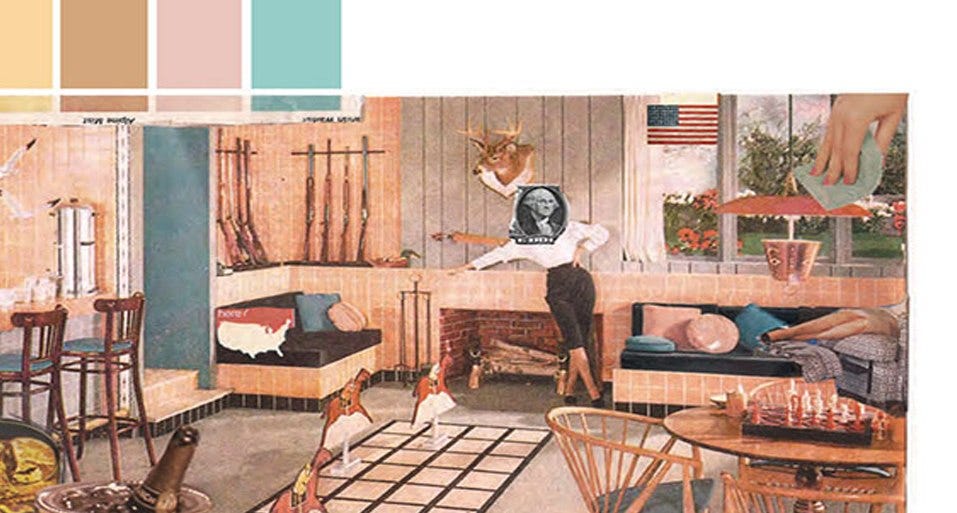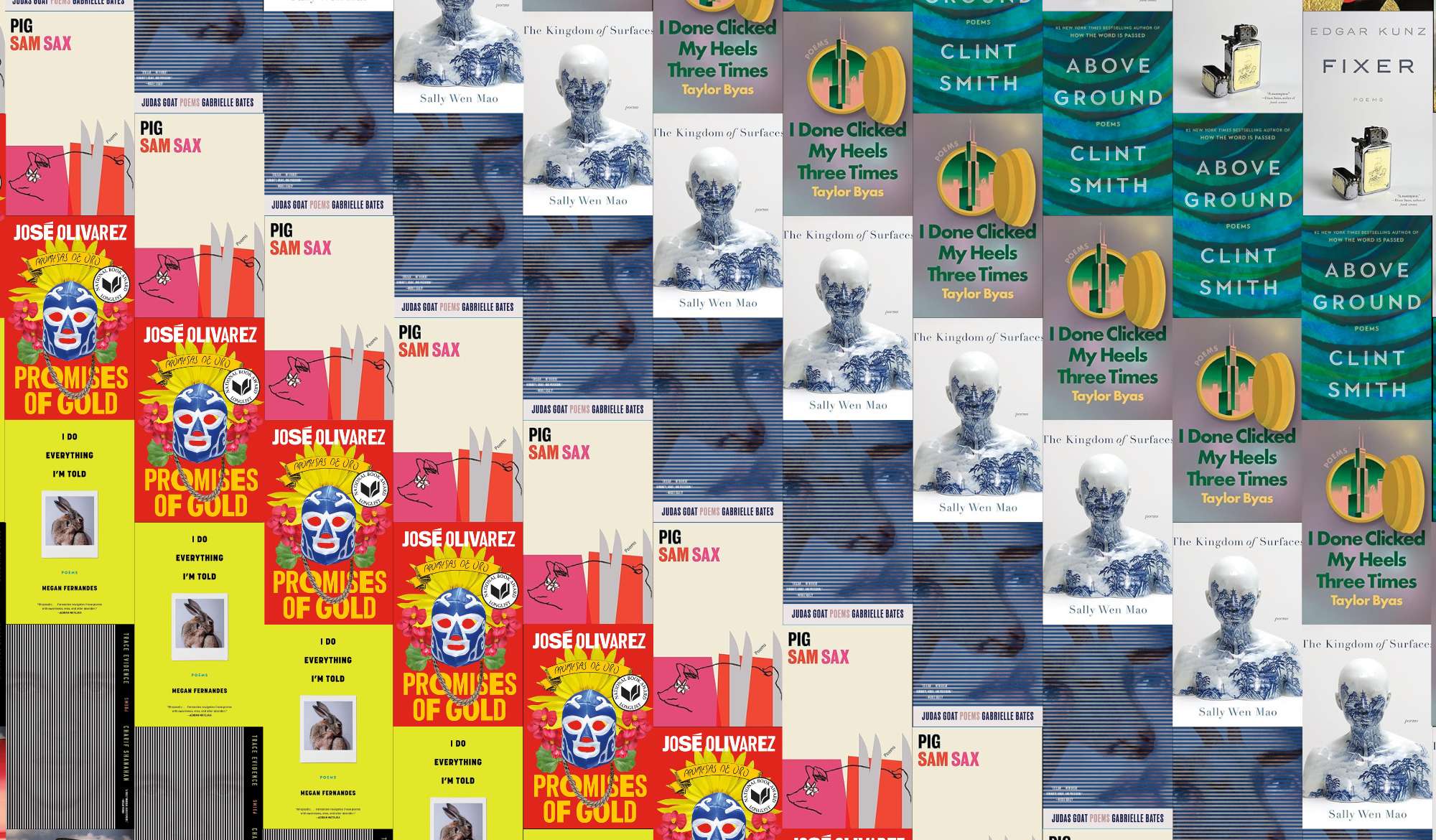Books & Culture
The Gravitas of the American Dream: American Homes by Ryan Ridge

by Kyle Coma-Thompson

A writer or filmmaker or conceptual artist that renders serious subject matter seriously is said to possess gravitas. Such work asserts a strong gravitational pull, has mass, and often because of its own self-seriousness, can prove to be heavy lifting. But the effort involved in engaging such art will supposedly make the reader or viewer a better, stronger person, of bona fide moral fiber. Against this aesthetic, how could an Eric Satie or John Cage not assert their difference and independence, proposing instead a lack of weight, a lightness; and in place of egoistic assertion of artistic virtuosity, a relaxed playfulness? Lightness is an underrated virtue, after all. It often requires a more restrained application of skill.
The housing market and financial crash of 2008–2009 would seem a subject resistant to light, comic analysis. But the book under review here, Ryan Ridge’s American Homes, attempts to do just that, indirectly. A satire of The American Dream, as embodied by that archetypal carrot-dangled-before-the-American-Worker, the tricked-out suburban home, Ridge’s book explores the contradictions inherent in ideals of affluence and ownership, and does so admirably, without edging into sourness or satirical revenge killing. The humor is affable, and odd. Somewhere between Demetri Martin and Steven Wright, Jacques Tati and Wes Anderson, Ramόn Gόmez de la Serna and Georges Perec. Where his previous collection of stories, Hunters & Gamblers, owed much to the poetry and uncollected stories of David Berman, American Homes pushes beyond that early influence, and is the stronger for it.
A hybrid text divided into three parts (“Part III”, “Different Rooms/Different Voices”, and “Ideas”), the book combines poetry, aphorisms, cartoons, and prose. Though united by theme and a logic of progression, its disparate elements work off each other like players in a improv group: the emphasis, above all else, is on humor, quick sometimes-silly sometimes-biting one-liners.
It opens with a paragraph-long paratactic list of things it aspires to be:
American Homes is a book. American Homes is an idea. American Homes is a book of ideas. American Homes is just beginning. American Homes is about to end. American Homes is the foundation of all unions. American Homes is the soundtrack to our American lives…
The tone is flat, mimicking a variety of dead language sources, from sound-bites gleaned from political sloganeering, to the dud pitches of late-night infomercials. Here and elsewhere throughout the book, Ridge inserts groupings of such statements, satirizing the surfaces of affectless, contentless speech. The effect of reading these sections is deliberately self-defeating, the declarative sentences so featureless and bland, one can’t help but gloss over them.
Following this opening invocation, though, the book’s first and longest section, “Part III”, takes this ironized authorial distance and pushes it to extremes of deadpan, inspired nonsense. Divided up into sections addressing different functional parts of a home — porch, roof, garage, doors, windows, etc. — Ridge, working as an architectural mythographer of sorts, creates origin stories of their creation and their many uses. Under a section titled “Skylights”, for example, where a reader might expect a straight-laced matter-of-fact description of skylights and their function, they’re met with:
Skylights (also referred to as “Sun Tunnels”) are thresholds to the sky. During the Dark Ages travelling salesmen went door-to- door selling skylight bulbs. Later, in the primitive era of American Homes, Skylights were simply called “Shitty Roofs.” “I believeth there is a gaping cavity in your roof, gentle neighbor,” one colonist said to another. “Ah, but that is a Sun Tunnel,” said the other. “I purchased it cheap from a Frenchmen. It adds natural light to my American Home!” The first colonist stepped back, considered it; “I’ll be damned. Leave it to the French.”
Subversion of the mundane is Ridge’s basic approach. Proceeding like a taxonomist and archivist of suburban domestic space, he works to prove the promise of explanatory coherence is largely a goof and a red herring.
Except for a few passing jabs at rednecks and some brief references to the Civil Rights Movement or to symbols of executive power and grotesque displays of affluence, American Homes is less interested in exploring these themes directly than in creating perversions of semantic and logical connection between those ideas and symbols which represent them. In a section titled “Garage”, garages are defined as “havens for teenaged guitarslingers as well as middle-aged dreamers.” Yet also:
Garages are the places where wildly successful American entrepreneurs start out. Tragically, they’re also the places where severely depressed American Homeowners end up. R.I.P..
This is as sharp and direct as Ridge gets, a quick, muted reference to a reality many have or haven’t been able to live through, foreclosed, unemployed, bankrupt. “A Stairway is a metaphor for life,” the opening to one section reads, “but life is not a metaphor for a Stairway.” What follows, of course, is intricate, associative nonsense. But among the nonsense are gnomic references to capitalist ideals of “getting ahead” and “climbing the ladder.” Ridge’s final word on the matter is an illustration of an air guitarist slicing his wrists open, strumming a non-existent Les Paul. Beneath it, the caption: “One man’s Stairway to Heaven is another man’s Staircase to Hell.” Mortgage payments and gainful employment are silent partners here. Instead of elaborating the point, Ridge lets his fidelity to realism work its way to the surface through laughter.
The book’s second and third sections read as supplements to that larger first chapter. There are funny, weird turns of thought and phrase throughout. But after the polished, mock-systematic approach of what preceded them, they seem provisional, less focused.
The book’s second section, “Different Rooms/Different Voices”, breaks away from taxonomical prose to repurpose autobiography and history in free verse. Allusions to literary and pop culture icons appear as frequently as punchlines. The last section, “Ideas”, is less ornate, more direct: a list of suggested innovations and observations about home upkeep and ownership. The conceit of “Ideas” has strong potential, but on the whole, this section isn’t as perceptive or as developed. Then again, maybe it’s a latent desire for gravitas, which expects comprehensive, bold flourishes at the end of a book. Overturning such expectations, Ridge doesn’t finish things with large statements or sweeping gestures. Instead, American Homes’ final chapter is mostly given over to white space of the page, offset by a few tightly constructed, whimsical aphorisms. That he’d chose to end it with small phrases, too small to hold any serious proclamations, seems fitting, given his disregard throughout the book for any kind of patriotic heroism.
On its final page there is an illustration of a single story house, the living room curtains drawn back. A trail of smoke is rolling from the chimney. Above the house, no clouds, no stars. Beneath the drawing there is a caption, the maxim “Per aspera ad astra.” Following this drawing is a four-page index, listing everything of relevance to be found in the book; the final entry in the index: “Zen koan.” Comedy is more incisive than tragedy, ironic bemusement more thoughtful than outrage: Ridge understands this. He has a way of writing from this position, and has a book, American Homes, to show for it.
American Homes (21st Century Prose)

by Ryan Ridge










